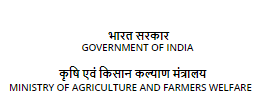Development Of Efficient Pulse Threshing and Allied Machines (IIPR Vertical Thresher, IIPR Pigeonpea Stripper, IIPR Suction Winnower)
Background:
Threshing of different pulses in available commercial threshers is a cumbersome process, where the operator has to increase or decrease clearance between the threshing drum and concave according to grain size. Depending upon broken grains number of pegs also need to be reduced. The chaff of pulses is very sturdy and large, hence, cannot be removed with a single blower. Therefore, a double blower thresher can be used for threshing pulses with limited applications
Threshing of pigeonpea in commercially available threshers is difficult due to the large plant size. Moreover, plant structure gets chopped off, which is otherwise used for roof covering, mud thatched walls, basket making and fuel purposes. Mostly threshing of pigeonpea is done manually by farm women thrashing the plant on the floor repeatedly. To separate grains from pod again threshed material is beaten by the wooden stalk. This makes the pigeonpea threshing process very cumbersome.
Winnowing of manually threshed material using fans/blower or prevailing winds is a common practice to separate the grain from threshed biomass. In the process, the operator has to stand in front of dust or particle-laden blown air in an awkward posture for hours. This may cause breathing and spinal trouble to the operator. This makes winnowing a cumbersome process:
Technology Details:
At IIPR, Kanpur concept of vertical thresher was evaluated. To shorten the length of chaff chopper blades were provided at the entry point of the vertical drum feeding chute. Beaters mounted on the vertical rotating shaft need not be readjusted for different pulse crops. Fed biomass is threshed inside the drum till it passes through a lower holding plate with 25 mm perforated holes. Light and small size chaff is blown away with the help of a blower, and bigger straws and grains are separated with the help of reciprocating sieves. There is no need for any machine changes to accommodate different pulses. For pigeonpea, stripped pods and leaf biomass can directly be fed to the vertical thresher.
A pigeonpea stripper has been designed and developed at the institute, which envisages the removal of pods and leaves from plants, with the least damage to the plant structure. Combing type operation is performed with the help of a rotating drum with a loop and peg arrangement. The use of pigeonpea strippers minimizes the drudgery involved in manual threshing. This stripped, pod and leaf, material can be threshed in any commercially available threshers with minor adjustment in cylinder-concave clearance and sieve of threshing drum.
A suction winnower was designed and developed at IIPR, Kanpur in which the lighter particles of manually threshed biomass are sucked and thrown away from the operator in such a way that operator is not exposed to the blown air. The operator has to fill the hopper from which biomass falls into the close chamber in two stages. The suction blower sucks the light particle and grains are collected at the outlet of the unit. Provision to increase or decrease air suction has also been made to suit different crops.


